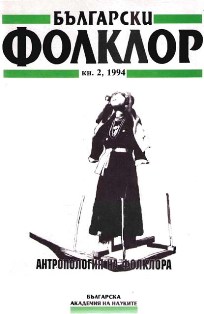Тялото – голо и облечено
The Human Body – Naked and Dressed
Author(s): Iva StanoevaSubject(s): Anthropology
Published by: Институт за етнология и фолклористика с Етнографски музей при БАН
Summary/Abstract: The author starts reading the dress from the naked body. In traditional culture the latter is regarded as an indication of being attached to the “alien”, non-cultivated space and as a possible way for setting a connection with this space. Along with this, it is also a state of transition from “wild” to “cultural” life of man. Covering the body, clothes in fact take place between two “natures” and shape space which in the process of cultural development gradually grows through the elements of clothing and is a reflection of the constantly complicating and differentiating human way of living. With every stage to come the dress becomes less “natural” and more “cultural”. The use of typologically earlier forms of dressing (uncut clothes, white clothes) is treated as a sign of the natural, regarding the opposition nature/culture. Thus for example, the white robe which had gradually turned from a main garment into underwear, is considered as a synonym of the naked body. The naked, as well as the covered and the dressed in white clothes bodies are different variants of the act of abolition or “breaking” the cultural frames of man (the dress with all its components and decorations). Similarly, eliminating some piece of clothing, or distorting its structure, opens a “channel” connecting man with the “alien” space and forces. Regarding the dress as a cultural counterpart of man, carrying information about his social identity at all levels, the author also draws attention to the relation between name and clothing. The “more individualist” nature of clothes in traditional culture is being stressed. The way of dressing marks each and every shift in the cultural behaviour of the individual and is the information to be immediately obtained in a communicative intercourse. As the “external” side of the Ego, clothes visually divide the community into various groups and are among the basic elements of the individual’s identification and self-identification. In this context clothing is viewed as a specific portrait of man, speaking of what he knows about himself and how he projects this knowledge upon himself.
Journal: Български фолклор
- Issue Year: XX/1994
- Issue No: 2
- Page Range: 74-82
- Page Count: 9
- Language: Bulgarian
- Content File-PDF

